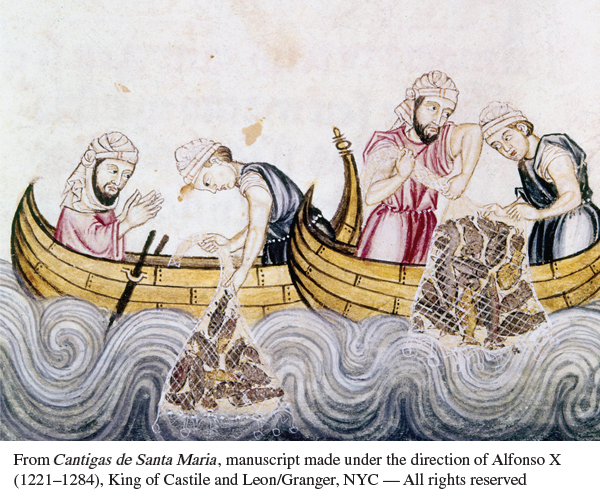A History of Western Society: Printed Page 218
A History of Western Society, Value Edition: Printed Page 205
A History of Western Society, Concise Edition: Printed Page 219
Introduction for Chapter 8
8
Europe in the Early Middle Ages
600–1000
By the fifteenth century, scholars in the growing cities of northern Italy began to think that they were living in a new era, one in which the glories of ancient Greece and Rome were being reborn. What separated their time from classical antiquity, in their opinion, was a long period of darkness, to which a seventeenth-
For a long time the end of the Roman Empire in the West was seen as the division between the ancient period and the Middle Ages, but, as we saw in the last chapter, there was continuity as well as change, and the transition from ancient to medieval was a slow process, not a single event. The agents in this process included not only the barbarian migrations that broke the Roman Empire apart but also the new religion of Islam, Slavic and steppe peoples in eastern Europe, and Christian officials and missionaries. The period from the end of antiquity (ca. 600–1000), conventionally known as the “early Middle Ages,” was a time of disorder and destruction, but it also marked the creation of a new type of society and a cultural revival that influenced later intellectual and literary traditions. While agrarian life continued to dominate Europe, political and economic structures that would influence later European history began to form, and Christianity continued to spread. People at the time did not know that they were living in an era that would later be labeled “middle” or sometimes even “dark,” and we can wonder whether they would have shared this negative view of their own times.▪

CHAPTER PREVIEW
What were the origins of Islam, and what impact did it have on Europe as it spread?
How did the Franks build and govern a European empire?
What were the significant intellectual and cultural changes in Charlemagne’s era?
What were the consequences of the ninth-
How did internal conflict and outside threats shape European political and economic development in this period?
Chronology
| 481–752 | Merovingian dynasty |
| ca. 571–632 | Life of the Prophet Muhammad |
| 651 | Official version of the Qur’an published |
| 711 | Muslim forces defeat Visigothic kingdom |
| 711–720 | Muslim conquest of Spain |
| ca. 760–840 | Carolingian Renaissance |
| 768–814 | Reign of Charlemagne |
| 800 | Imperial coronation of Charlemagne |
| 800–900 | Free peasants in western Europe increasingly tied to the land as serfs |
| 843 | Treaty of Verdun divides Carolingian kingdom |
| 850–1000 | Most extensive Viking voyages and conquests |
| ca. 900 | Establishment of Kievan Rus |
| 911 | Vikings establish Normandy |
| 950 | Muslim Córdoba is Europe’s largest and most prosperous city |
| 1000 | Stephen crowned first king of Hungary |